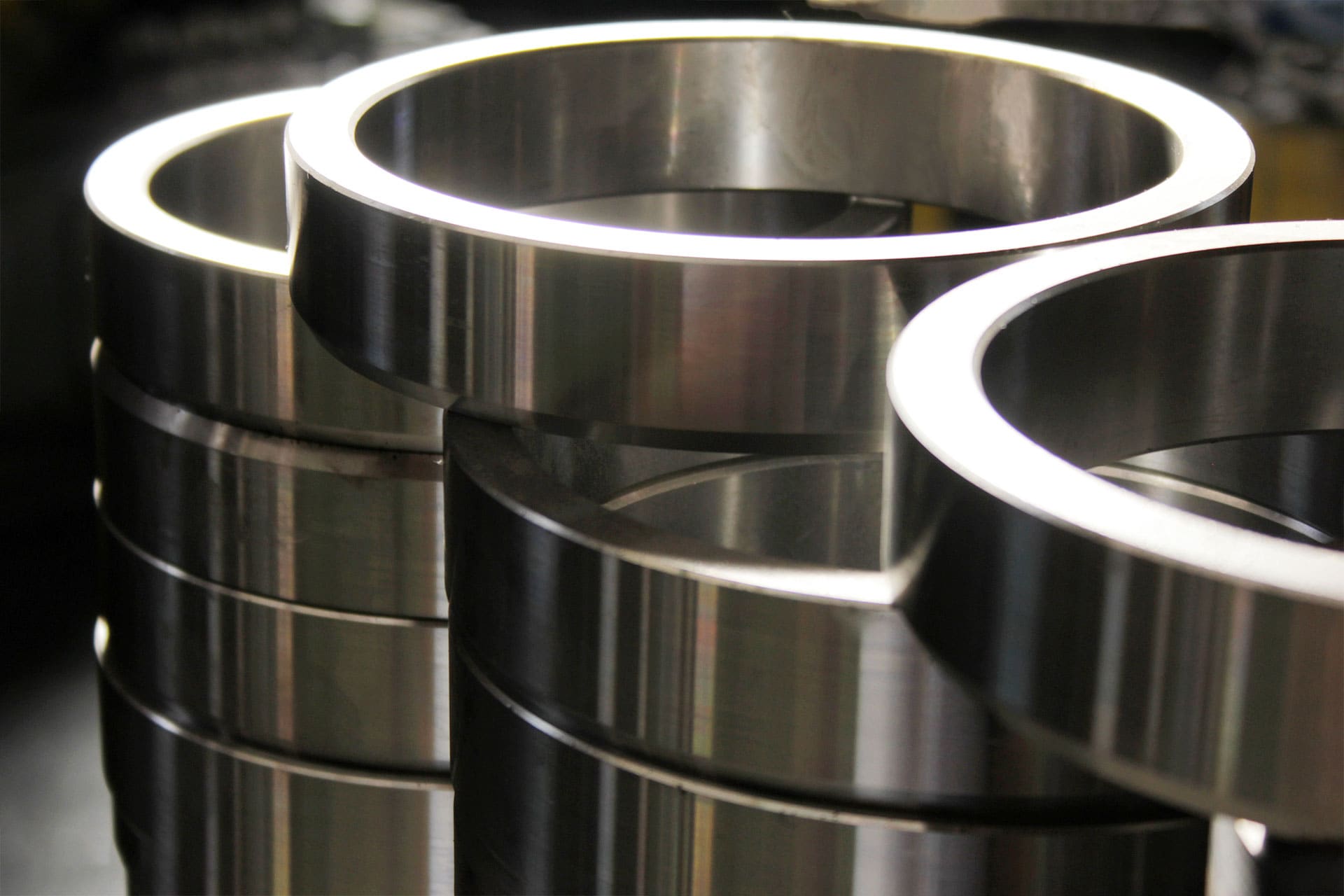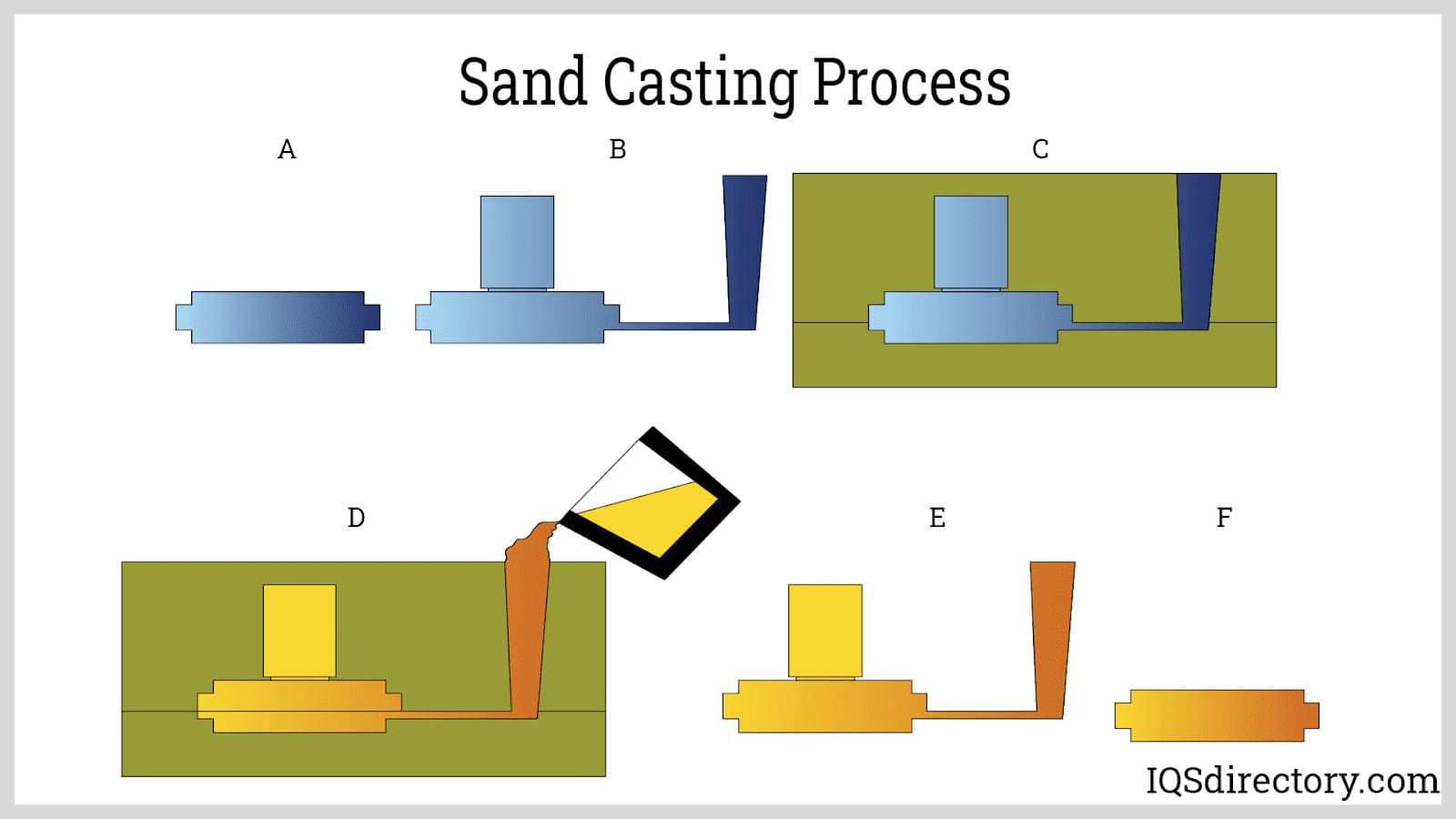Top 10 reasons to choose Wisconsin Aluminum Foundry for your industrial applications
Wiki Article
Just How Aluminum Foundry Adds to Ingenious Solutions in Metal Fabrication
Aluminum shops substantially affect the landscape of metal manufacture. They adopt innovative casting techniques that improve accuracy and layout adaptability. This ability permits the production of lightweight and durable components that accommodate diverse sector requirements. Moreover, the assimilation of automation and sustainable practices establishes a benchmark for efficiency. As these foundries develop, they increase inquiries regarding the future of production and the function of innovation in shaping the industry.The Function of Aluminum Foundries in Modern Production
Aluminum shops play an essential duty in contemporary production, contributing considerably to different sectors, consisting of automobile, aerospace, and durable goods. These centers concentrate on the melting and casting of light weight aluminum, changing resources into top notch elements that meet strict market criteria. The light-weight yet solid buildings of Aluminum make it a perfect option for manufacturers intending to improve performance while lowering weight, particularly in the vehicle field, where fuel performance is critical.Aluminum shops utilize cutting-edge procedures to generate intricate shapes and designs that provide to specific market needs. By leveraging innovative technologies such as computer-aided layout and simulation, these foundries can maximize their production processes and improve material use. This not only improves the quality of the end products but also minimizes waste, adding to more sustainable manufacturing methods. Eventually, the payments of Aluminum factories are vital for driving development and performance throughout numerous fields.
Advanced Casting Techniques Transforming Metal Manufacture
Advanced casting methods are revolutionizing the field of steel construction, specifically with accuracy casting approaches that boost precision and reduce waste. Innovative alloy advancements are additionally playing a vital duty, enabling for personalized homes and boosted efficiency in various applications. Together, these improvements are setting new requirements in performance and quality within Aluminum shops.Accuracy Casting Techniques
As the demand for high-grade elements in various markets proceeds to increase, accuracy casting techniques have emerged as a transformative pressure in metal fabrication. These strategies, including financial investment spreading, lost foam spreading, and die spreading, enable complex geometries and limited tolerances that standard methods commonly struggle to achieve. By utilizing advanced products and modern technologies, precision casting decreases waste and improves performance, making it possible for suppliers to generate complicated get rid of reduced preparations. In addition, these methods offer premium surface area finishes and mechanical properties, making them suitable for sectors such as aerospace, automotive, and medical devices. As suppliers progressively embrace accuracy spreading, the capability to fulfill specific design requirements while preserving cost-effectiveness ends up being an essential benefit in today's open market.Cutting-edge Alloy Developments
Innovative alloy developments are reshaping the landscape of metal manufacture, specifically within the domain name of accuracy spreading. Breakthroughs in product science have actually led to the production of specialized Aluminum alloys that boost toughness, resistance, and stamina to rust. These novel alloys enable foundries to create elaborate elements with improved mechanical homes, dealing with varied industries such as aerospace, automotive, and electronic devices. The consolidation of innovative spreading methods, including die spreading and sand casting, more maximizes using these materials, enabling intricate geometries and decreased waste. Because of this, manufacturers are better outfitted to satisfy stringent efficiency standards while minimizing ecological effect. Inevitably, these ingenious alloys are leading the way for a brand-new age of efficiency and sustainability in steel fabrication.Lightweight and Long Lasting: The Benefits of Aluminum Parts
Aluminum elements use considerable benefits in different applications because of their lightweight nature and sturdiness. This combination adds to boosted gas effectiveness, particularly in the vehicle and aerospace industries. Furthermore, light weight aluminum's fundamental deterioration resistance further extends the life-span of items, making it a recommended choice in lots of metal fabrication procedures.Boosted Fuel Efficiency
While standard products have actually long been the standard in different sectors, the change towards Aluminum components is revolutionizing the landscape of metal construction, specifically in relation to enhanced fuel performance. Light weight aluminum's light-weight nature notably reduces the overall weight of automobiles and equipment, enabling enhanced efficiency and lowered energy intake. This decrease in weight converts straight to reduced gas usage, making Aluminum an attractive choice for producers aiming to satisfy rigid ecological laws. Furthermore, aluminum's resilience warranties that parts keep their integrity with time, contributing to lasting efficiency. As markets significantly focus on sustainability, the adoption of Aluminum parts ends up being a calculated choice, aligning functional objectives with ecological responsibility while enhancing fuel efficiency in numerous applications.Deterioration Resistance Perks
One of the standout features of Aluminum components is their phenomenal rust resistance, which considerably enhances the long life and dependability of various applications. This residential property is especially beneficial in harsh settings, such as aquatic and industrial settings, where direct exposure to wetness and chemicals can lead to substantial deterioration in other steels. Unlike steel, Aluminum naturally creates a protective oxide layer that acts as an obstacle against ecological aspects, minimizing the danger of rust and deterioration. As a result, Aluminum parts need much less maintenance and have a longer life span, making them an economical choice for manufacturers. This integral resilience not only contributes to the overall performance of products however likewise supports sustainability initiatives by minimizing the demand for regular substitutes.Developments in Layout and Design Through Aluminum Foundries
As innovations in Aluminum Foundry technology proceed to improve the landscape of metal fabrication, ingenious layout and design services are more info arising to fulfill the demands of diverse sectors. The versatility of Aluminum permits detailed designs that were formerly unattainable with traditional materials. Factories are leveraging computer-aided layout (CAD) software application and simulation tools to enhance the style procedure, making it possible for designers to develop light-weight yet durable components tailored to particular applications.The capacity to integrate sophisticated alloying methods permits the personalization of Aluminum buildings, boosting toughness and longevity. This flexibility cultivates creativity in item growth, permitting firms to explore brand-new shapes and frameworks that boost capability while minimizing weight. Collective efforts between shops and developers assist in fast prototyping, causing shorter project timelines and increased total effectiveness. These developments not just improve product performance but likewise drive sustainability by reducing product waste throughout the construction process.
Enhancing Performance With State-Of-The-Art Modern Technology
Innovations in state-of-the-art technology are transforming the effectiveness of Aluminum factories, simplifying processes from design to manufacturing. Automation plays a critical role, with robotic systems enhancing the rate and precision of jobs such as molding, pouring, and completing. These automated options lessen human error and minimize labor costs, while additionally increasing result consistency.In addition, the assimilation of sophisticated software application for computer-aided style (CAD) and simulation permits for rapid prototyping and testing, expediting the shift from principle to production. Foundries are utilizing real-time data analytics to keep an eye on procedures, guaranteeing peak efficiency and reducing downtime.
Moreover, 3D printing technology is being taken on for developing complex molds and parts, decreasing product waste and lead times. The combination of these cutting-edge innovations not only improves efficiency but also improves the top quality of Aluminum items, positioning foundries at the forefront of innovation in metal fabrication.
Lasting Practices in Aluminum Foundries
An expanding variety of Aluminum shops are embracing sustainable methods to decrease their ecological influence and advertise resource performance. Aluminum Foundry. These foundries are significantly carrying out recycling programs, where scrap Aluminum is accumulated and reprocessed, greatly minimizing waste. Furthermore, energy-efficient modern technologies, such as electric heating systems and progressed insulation products, are being utilized to reduced power usage during the melting processWater conservation techniques are additionally gaining grip, with lots of foundries recycling water in cooling down systems to minimize overall usage. Additionally, the adoption of green coverings and additives reduces hazardous emissions without compromising item high quality.
Future Patterns in Aluminum Casting and Metalworking
Significantly, the future of Aluminum spreading and metalworking is being shaped by technological innovations and evolving sector criteria. Improvements in automation and robotics are improving procedures, improving accuracy, and minimizing labor costs. The fostering of additive manufacturing techniques, such as 3D printing, is changing conventional spreading techniques, enabling complicated geometries and reduced product waste.In addition, the integration of expert system and information analytics is enabling real-time monitoring and anticipating maintenance, which enhances manufacturing effectiveness. Sustainability continues to be a core focus, with business purchasing environmentally friendly techniques, including the recycling of Aluminum scrap and making use of eco-friendly energy sources in manufacturing.
As the need for lightweight, long lasting products in various sectors increases, Aluminum foundries have to adapt by establishing cutting-edge alloys and enhancing casting techniques. These patterns jointly indicate a future where Aluminum spreading and metalworking are more effective, lasting, and responsive to market demands.

Often Asked Questions
What Sorts Of Aluminum Alloys Are Typically Made Use Of in Factories?
Generally utilized Aluminum alloys in shops include 2xxx collection (copper), 3xxx series (manganese), 4xxx collection (silicon), 5xxx collection (magnesium), and 6xxx series (magnesium and silicon), each offering one-of-a-kind residential properties suitable for numerous applications.How Does Aluminum Spreading Contrast to Other Metal Fabrication Techniques?
Aluminum casting offers advantages such as reduced production prices and complex shapes contrasted to standard fabrication methods. It gives outstanding dimensional accuracy and surface finish, making it a preferred option for lots of markets over alternatives like machining or welding.What Safety Actions Are Executed in Aluminum Foundries?
Aluminum factories implement numerous security steps, consisting of personal safety tools, ventilation systems, normal safety and security training, hazard analyses, and emergency situation procedures to safeguard employees from dangers connected with molten metal, warm, and prospective chemical direct exposure. Wisconsin Aluminum Foundry.Exactly How Can Firms Discover Trustworthy Aluminum Foundry Allies?
Business can recognize dependable Aluminum Foundry companions by assessing market reputation, evaluating customer testimonials, assessing top quality accreditations, taking into consideration manufacturing capabilities, and carrying out website brows through to assure alignment with their specific demands and criteria.

What Is the Regular Preparation for Aluminum Spreading Projects?
The regular preparation for Aluminum spreading tasks ranges from 2 to eight weeks, depending upon elements such as design complexity, production volume, and the shop's ability to fulfill particular job demands and timelines.
Aluminum factories play a vital role in modern manufacturing, adding substantially to numerous industries, consisting of auto, aerospace, and customer goods. As advancements in Aluminum Foundry modern technology proceed to reshape the landscape of metal manufacture, cutting-edge style and engineering options are arising to satisfy the demands of varied markets. Developments in state-of-the-art modern technology are changing the performance of Aluminum factories, streamlining procedures from style to production (Aluminum Foundry). A growing number of Aluminum foundries are embracing sustainable techniques to decrease their ecological impact and promote source effectiveness. As the demand for lightweight, durable products in various sectors boosts, Aluminum shops should adjust by establishing cutting-edge alloys and improving casting strategies
Report this wiki page